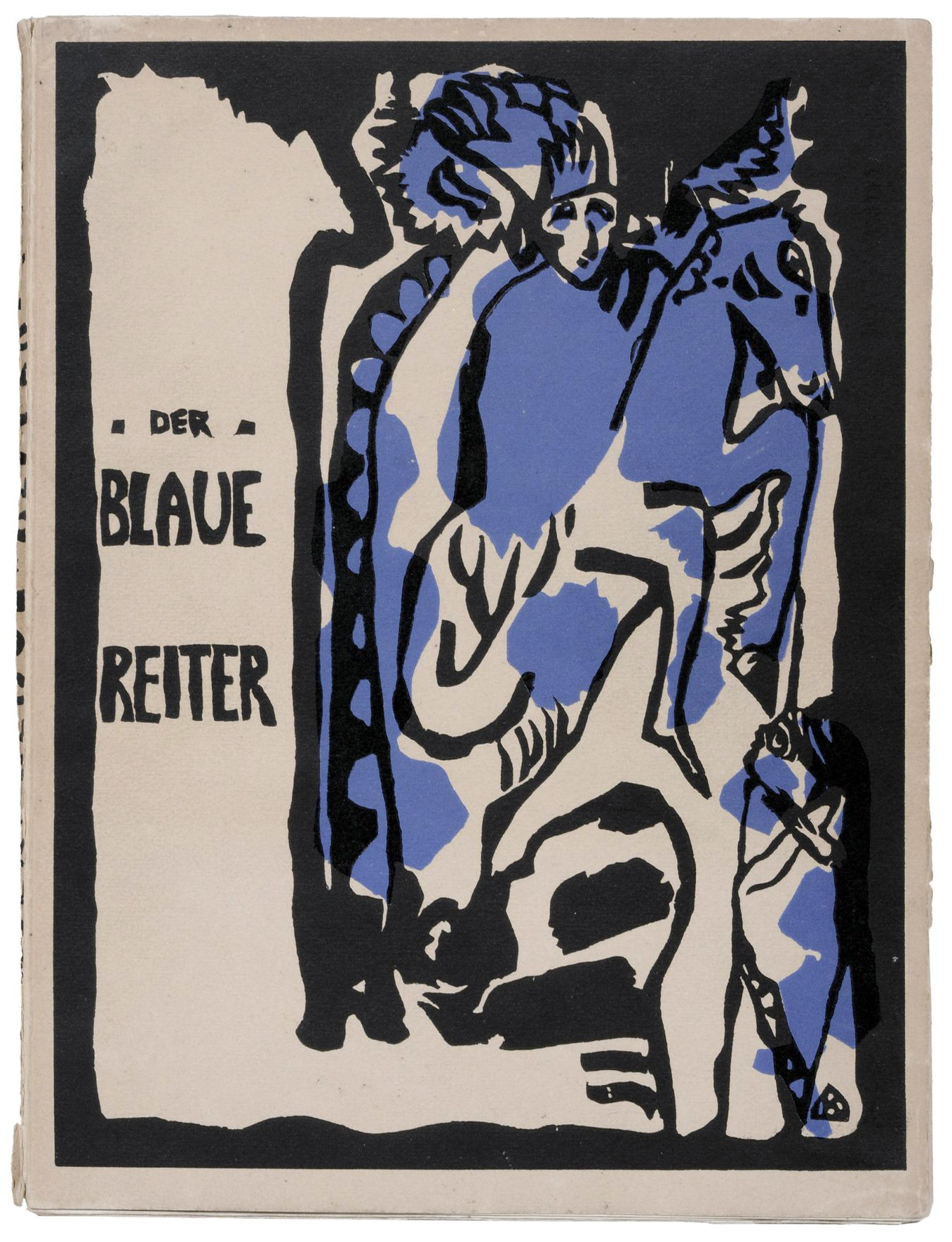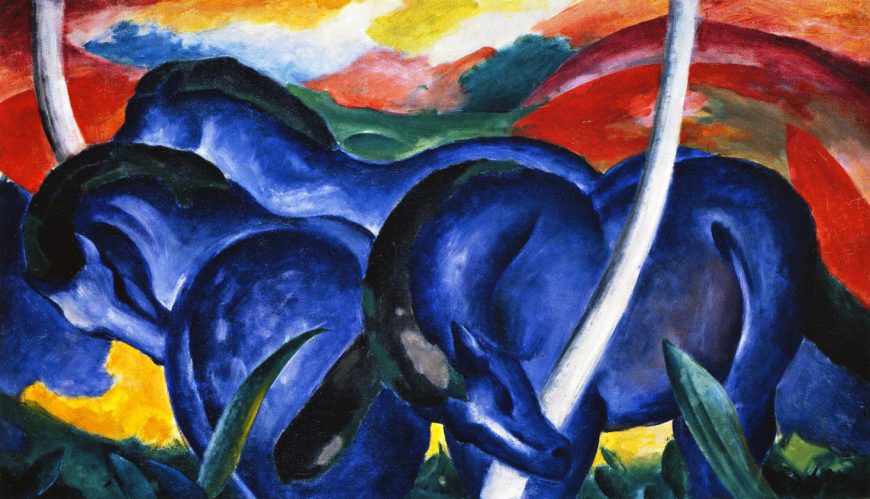German Expressionism, an introduction
Though many artists of the early twentieth century can accurately be called Expressionists, two groups that developed in Germany, Die Brücke (The Bridge) and Der Blaue Reiter (The Blue Rider), are among the best known and help to define the style. Influenced in part by the spiritual interests of Romanticism and Symbolism, these artists moved further from the idealized figures and smooth surface of 19th century academic painting. Instead of depicting the visible exterior of their subjects, they sought to express profound emotional experience through their art. German Expressionists, like other European artists of the time, found inspiration in so-called “primitive” sources that included African art, as well as European medieval and folk art and others untrained in Western artistic traditions. For the Expressionists, these sources offered alternatives to established conventions of European art and suggested a more authentic creative impulse.
Die Brücke
In 1905, four young artists working in Dresden and Berlin, joined together, calling themselves Die Brücke (The Bridge). Led by Ernst Ludwig Kirchner, the group wanted to create a radical art that could speak to modern audiences, which they characterized as young, vital, and urban. Drawn from the writings of Friedrich Nietzsche, the nineteenth-century German philosopher, the name “Die Brücke” describes their desire to serve as a bridge from the present to the future. While each artist had his own personal style, Die Brücke art is characterized by bright, often arbitrary colors and a “primitive” aesthetic, inspired by both African and European medieval art. Their work often addressed modern urban themes of alienation and anxiety, and sexually charged themes in their depictions of the female nude.

Their first exhibition was held in the showroom of a lamp factory in Dresden in 1906 for which they published a program of woodcut prints reflecting their interest in earlier traditions of German art. In the introductory broadsheet, Kirchner made clear the group’s revolutionary intentions. He proclaimed,
With faith in progress and in a new generation of creators and spectators we call together all youth. As youth, we carry the future and want to create for ourselves freedom of life and of movement against the long established older forces.[1]
This optimism was not long-lived. Internal squabbling caused the group to dissolve in 1913 just prior to the start of the First World War.
Der Blaue Reiter

Based in the German city of Munich, the group known as Der Blaue Reiter lasted only from their first exhibition at the Galerie Thannhausen in 1911 to the outbreak of World War I in 1914. Die Blaue Reiter took its name from the motif of a horse and rider, often used by founding member Vasily Kandinsky.
This motif appeared on the cover of the Blue Rider Almanac, published in May 1912, and reflects Kandinsky’s interest in medieval traditions and the folk art of his Russian homeland. In contrast to Die Brücke, whose subjects were physical and direct, Kandinsky and other Die Blaue Reiter artists explored the spiritual in their art, which often included symbolism and allusions to ethereal concerns. They thought these ideas could be communicated directly through formal elements of color and line, that, like music, could evoke an emotional response in the viewer. Conceived by Kandinsky and Franz Marc, the almanac included essays by themselves and other German and Russian artists, musical compositions by Expressionist composers, such as Arnold Schönberg, and Kandinsky’s experimental theater piece, “Der gelbe Klang” (The Yellow Sound). This range of content shows Der Blaue Reiter’s efforts to provide a philosophical approach not just for the visual arts, but for culture more broadly. These ideas would become more fully developed at the Bauhaus where Kandinsky taught after the war (Marc died during the Battle of Verdun in 1916).[2]

- Translated excerpt from Charles Harrison and Paul Wood, Art in Theory, 1900-2000: An Anthology of Changing Ideas, Oxford: Blackwell Publishing, 1993, page 65 ↵
- Shawn Roggenkamp, "Expressionism, an introduction," in Smarthistory, October 2, 2016, accessed March 2, 2023, https://smarthistory.org/expressionism-intro/ ↵

